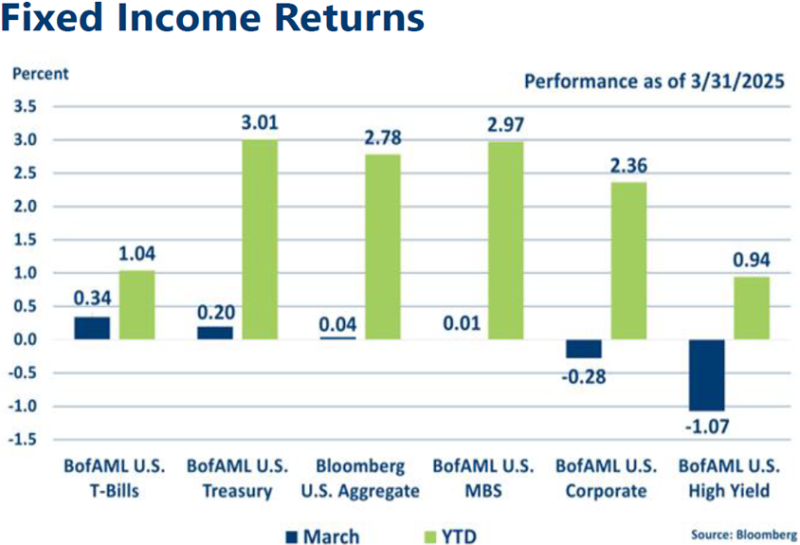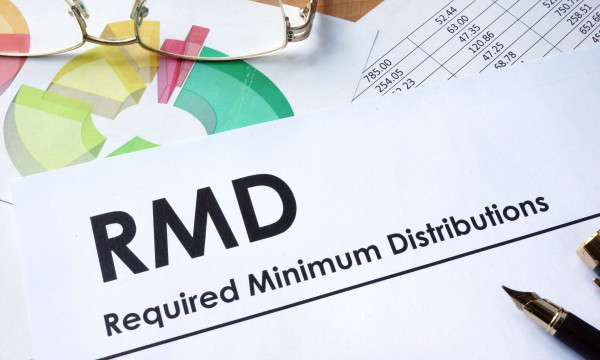Market Recap: March 2025

Market commentary
- The Fed adjusted its GDP growth forecast for 2025 down to 1.7% from the previous 2.1%, while slightly increasing its inflation projections for the same period.
- Inflation moved further above the Fed’s 2% target with their preferred measure, the Personal Consumption Expenditures (PCE) index, rising from 2.6% to 2.8%.
- Consumer sentiment started the year at 74.0 but fell to 57.0 in March, marking its lowest point since November 2022.
- Rising domestic and international political tensions, along with government layoffs and uncertainty about future tariffs, are fueling investor insecurity.
Select economic and market data
Statistic (monthly unless noted) |
Current |
Previous |
|---|---|---|
| U.S. GDP (quarterly) | 2.4% | 3.1% |
| Consumer Confidence | 92.9 | 100.1 |
| Consumer Price Index Y/Y | 2.8% | 3.0% |
| Core PCE (x food & energy) | 2.8% | 2.6% |
| ISM Manufacturing Index | 49.0 | 50.3 |
| Unemployment Rate | 4.1% | 4.0% |
| 2-Year Treasury Yield | 3.89% | 3.99% |
| 10-Year Treasury Yield | 4.21% | 4.21% |
Equities
- U.S. equity markets declined in March for the second consecutive month with the S&P 500 falling 5.63%.
- Nine of the 11 sectors in the S&P 500 ended lower in March.
Fixed income
- The Federal Reserve kept rates steady in the March meeting, continuing to take a wait-and-see approach. Expectations for two rate cuts this year remain.
- Treasury yields showed little movement over the month, with the 2-year Treasury experiencing a slight decline and the 10-year yield holding steady at 4.21%.
- Reflecting the equity market decline, both Corporate and High Yield bonds dropped.
Strategic outlook
- Some caution warranted on equities in the near-term, particularly in large-cap stocks with above-average valuations; currently favoring small-cap and mid-cap domestic stocks longer-term.
- Near-average expected returns projected for fixed income with the Fed on pause and rates reflective of conditions.
- Above-average volatility is likely given central bank involvement and geopolitical uncertainty.
|
Learning Center articles, guides, blogs, podcasts, and videos are for informational purposes only and are not an advertisement for a product or service. The accuracy and completeness is not guaranteed and does not constitute legal or tax advice. Please consult with your own tax, legal, and financial advisors.






